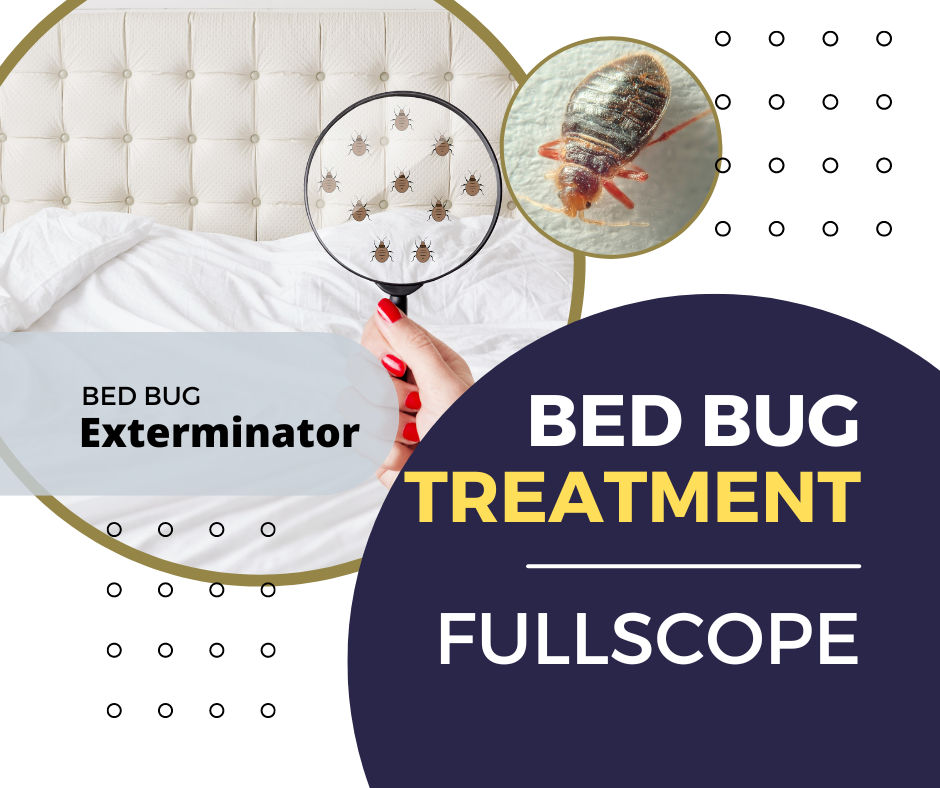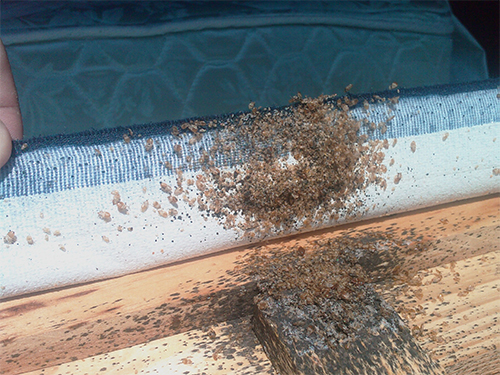Affordable Bed Bug Heat Treatment for Quick and Effective Results
Wiki Article
Get Educated About the Kinds Of Pest Control Techniques and Their Advantages for Homeowners
Understanding the different parasite control approaches offered to property owners is vital for efficient pest management. Home owners that are knowledgeable can make tactical selections that not only address pest concerns yet additionally improve the overall top quality of their living atmosphere.Chemical Insect Control Methods
Chemical parasite control approaches are a crucial component of incorporated pest monitoring approaches for house owners seeking reliable solutions to pest invasions. These approaches include the application of chemical compounds designed to get rid of or deter bugs that threaten personal effects, health and wellness, and convenience. Typical chemicals used include insecticides, herbicides, fungicides, and rodenticides, each tailored to target particular parasites.The key benefit of chemical pest control is its fast efficiency; numerous solutions provide prompt results, lowering pest populations considerably quickly. Additionally, advances in chemical formulations have caused products that are a lot more ecologically pleasant and have lower poisoning levels for non-target organisms when used appropriately.

Organic Insect Control Methods
Natural pest control approaches have actually gained prestige as homeowners look for more secure and more lasting options to traditional chemical methods. Organic insect control strategies use all-natural predators, parasites, or virus to take care of bug populations properly. This method is not just eco-friendly but also decreases the risk of damage to non-target types, including valuable insects and wild animals.Among one of the most usual organic control approaches includes introducing natural killers right into the atmosphere. For instance, ladybugs can be utilized to manage aphid populations, while nematodes target soil-dwelling bugs like grubs. Furthermore, parasitoids-- organisms that reside on or within a host-- can be utilized to manage specific bug species by laying eggs inside them, eventually resulting in their demise.
Another technique is making use of biopesticides, which are originated from all-natural products such as plants, minerals, or microorganisms (bed bug exterminator). These items can properly target bugs while positioning minimal risk to pets and humans. In general, organic insect control methods give homeowners with an effective ways of insect administration that lines up with eco-friendly principles, promoting a much healthier living atmosphere while minimizing dependence on synthetic chemicals
Mechanical Parasite Control Approaches
Mechanical insect control strategies include a range of techniques that physically avoid or get rid of bugs without the usage of chemicals. These methods are especially useful for property owners looking for eco-friendly options while making sure the safety of their living spaces.One usual method is using barriers, such as webs, displays, and traps, which avoid pests from getting in homes or details locations. Setting up home window displays can effectively keep insects out, while utilizing physical obstacles around gardens can prevent larger pests like deer or rabbits. Additionally, mechanical traps made for rats can catch and get rid of these insects without the demand for harmful compounds.
An additional effective approach entails making use of vacuum cleaners and brooms to remove parasites straight from surfaces. Routine bed bug heat treatment cleaning and maintenance can considerably minimize pest populaces by eliminating food resources and concealing spots. Employing gadgets like ultrasonic parasite repellents can hinder various parasites with sound waves that are undesirable to them yet faint to people.
Cultural Pest Control Practices
Social insect control practices concentrate on changing the setting and management techniques to develop problems that are much less conducive to pest invasions. These techniques are fundamental in keeping a balanced community and lowering the dependence on chemical treatments. By changing farming practices, homeowners can successfully discourage pests while promoting plant health.One typical technique consists of plant rotation, which disrupts the life cycles of bugs by transforming the sorts of plants expanded in a certain area (bed bug exterminator). This not just reduces pest populations but likewise improves soil health and wellness. Additionally, intercropping-- growing varied plants in distance-- can confuse bugs and minimize their capability to situate their preferred host plants
Water monitoring is one more crucial aspect of social methods. Appropriate watering methods can protect against standing water, which acts as a breeding ground for mosquitoes and other bugs. Preserving sanitation in and around the home, such as on a regular basis getting rid of debris and food waste, can significantly lower pest attraction.
Including these social practices right into a comprehensive bug management method allows house owners to create an atmosphere that naturally deters parasites, therefore improving the performance of other control methods while advertising sustainable horticulture and landscape design.

Integrated Pest Monitoring Approaches
Integrated Bug Administration (IPM) stands for an alternative strategy that incorporates different methods to efficiently manage pest populations while reducing environmental influence. This technique incorporates biological, social, physical, and chemical techniques to attain sustainable bug control. By assessing pest populations and their natural enemies, IPM emphasizes monitoring and determining pests before executing control measures.One of the core concepts of IPM is the use of thresholds, which develop the degree of bug activity that warrants treatment. This makes certain that therapies are applied just when required, decreasing the reliance on chemical pesticides. Organic control approaches, such as introducing natural killers or parasites, work in combination with cultural practices like plant rotation and environment control to interfere with pest life process.
Moreover, IPM encourages using least-toxic chemical choices when intervention is needed, prioritizing items that present minimal threat to non-target organisms and the setting. For house owners, embracing IPM comes close to not only boosts the efficiency of parasite administration yet additionally advertises a healthier living setting, promoting biodiversity and decreasing chemical exposure. Eventually, IPM empowers house owners to make informed choices that balance bug control with ecological obligation.
Conclusion
In conclusion, understanding the numerous insect control approaches encourages home owners to make educated decisions relating to pest monitoring. Each method-- chemical, organic, mechanical, social, and integrated parasite monitoring-- uses unique advantages that provide to various requirements and preferences.Understanding the numerous bug control techniques available to homeowners is essential for reliable bug administration.Chemical pest control approaches are an important element of integrated parasite management strategies for house owners seeking reliable services to pest infestations. Generally, biological parasite control techniques give house owners with an efficient ways of bug administration that aligns with environmental principles, promoting a much healthier living atmosphere while reducing reliance on artificial chemicals.
Cultural bug control practices focus on changing the environment and monitoring techniques to produce problems that are less favorable to pest infestations.In final thought, understanding the different pest control techniques encourages property owners to make enlightened decisions relating to pest management.
Report this wiki page